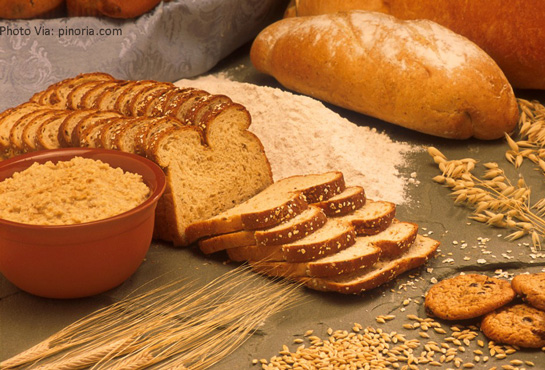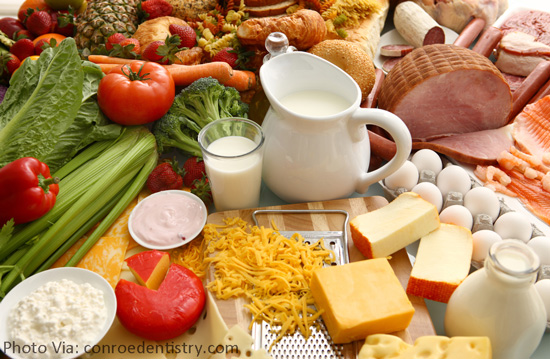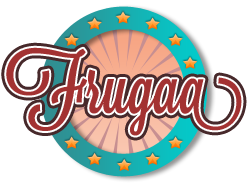Healthy Diet Tips for Active People
As we move out of winter and into spring, a lot of people start to take note of their eating habits as a means to get “bathing suit ready” and in better shape for the warmer months. When people look to get healthy, they almost always begin by adopting a workout regimen, however, what most people overlook is that no matter how active you are and how much you already work out, true health and a fit body comes down to your diet. In fact, most studies site that 20% of ones physical appearance and health is the result of working out while 80% is the result of diet. The old nutritionists phrase that “abs are made in the kitchen” rings true, so if you’ve found yourself working out every day and still struggling to find that coveted 6-pack, drop a few pounds, build some muscle, or simply just feel better, it’s through your diet that you need to make the most significant change.
There are several things that people who workout every day need to consider when thinking about their diet and what foods to eat and avoid. Here is the breakdown:

Protein
Everyone needs protein in their diet for energy, but particularly people who workout every day. Proteins found in all animals, including humans, are made of chains of amino acids, which are necessary for life. Amino acids help to not only repair the body’s cells, but also to create new cells. If you life weights a lot, this is how you feed your muscles and repair the muscles that are torn, strained, or weak after a workout. Protein’s found in meats, fish, eggs, and dairy will feed energy into those muscles and give you the vivacity to continue a healthy fitness routine.
Every person should be consuming some kind of protein source in every meal, even with snacks. For example, if you have an apple for a snack, eat it with a cheese stick; if you have a salad for lunch, top it with grilled chicken, and if you eat pasta for dinner, include some lean ground beef or beans in the tomato sauce. The ideal portion is 3-6 oz. of protein per meal, but listen to your bodies hunger signs and if you eat 15 oz. at dinner now, cutting down to 9 oz. to begin will make a significant dent.
Carbohydrates
So many diet trends mark carbohydrates as the enemy, but the endless amounts of books and media coverage misrepresent the concern. The carbs you should avoid are bleached, refined carbohydrates that have been stripped of their natural nutrients. For instance, rice begins brown, yet manufacturers have always bleached it to appear white.
Eat the nutritious brown rice and avoid the white rice at all costs, so that you don’t consume excess sugars or food that has been manufactured for consumption. When all else fails, opt for things titled “whole grain” or “whole wheat” over regular white breads, rices, pastas, and grains. A great transition to getting the vitamins from carbs that may be missing from your diet is to get them through non-starchy, leafy green vegetables and natural fruit. Try kale, collards, red lettuce and apples, peaches, and mangos for a little extra carb spike that won’t leave you feeling sluggish.

Fats
Much like carbohydrates, fats get a bad reputation from fad diets that hope you will turn to their chemically infused alternative products. Avoid fake “butter” products and spreads, and choose the fats in natural forms. When you must have butter, go for a small amount of real butter as opposed to a substitute, and when cooking use extra virgin olive oil or oil based sprays.
Don’t deep fry your foods, instead, think of using fat as a seasoning or flavor much like you would with salt, pepper, and dried seasonings. It’s used to help cook the food and infuse a flavor, but shouldn’t be the primary taste of whatever you’re eating. Keep fats limited, though. When necessary, use oil based dressings, and use a squeeze of lemon on vegetables or fish to get the flavor that might otherwise be added with butter or oil. You can also start looking into other natural fats on the market that are considered good for helping burn fat; for instance, coconut oil and almond butter are two great products whose fat content is known to aid in weight loss, when consumed in reasonable servings and paired with other healthy foods.
The key factors to success are:
1. Balance
For every meal have half your plate filled with non-starch carbs from vegetables, a quarter of your plate filled with a protein source, and the other quarter filled with a whole grain. Include a small amount of fat, which is only one serving within your whole meal. So, if you cook your chicken in oil, you can’t use oil on your salad. Pick your fat and choose one place it makes the most sense, and cut all other fat out of your meal.

2. Avoid Deprivation
It’s important to allow yourself times to enjoy the foods you love and might crave. Giving up anything completely may result in messing up your results, because you may over indulge one night. If it’s your birthday and there’s cake, don’t be a martyr and not eat it. Instead, simply take a few bites, and get immediately back on track with your diet and exercise.
3. Hydration
You won’t lose weight and be healthy while working out and dieting if you’re not constantly drinking water. You should be drinking half your body weight in ounces of water as well as an extra 8oz. of water for every hour that you work out. Have water on you at all times, and for your other drink choices, only stick to tea (iced or hot) and coffee without added creams or sugars. If all drinks are water based, they will flush out the toxins in your system, improve muscle repair, and give your skin a nice healthy, tight, and youthful glow.
